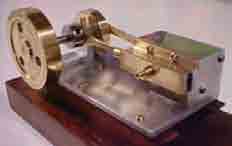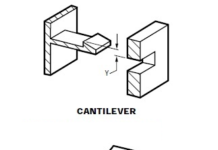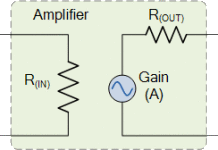

Flywheel working principle |
Introduction : A flywheel used in machines serves as a reservior which stores energy during the period when the supply of energy is more than the requirement and releases it during the period when the requirement of energy is more than supply.
In case of steam engines, internal combustion engines, reciprocating compressors and pumps, the energy is developed during one stroke and the engine is to run for the whole cycle on the energy produced during this one stroke. For example, in I.C. engines, the energy is developed only during power stroke which is much more than the engine load, and no energy is being developed during suction, compression and exhaust strokes in case of four stroke engines and during compression in case of two stroke engines. The excess energy developed during power stroke is absorbed by the flywheel and releases it to the crankshaft during other strokes in which no energy is developed, thus rotating the crankshaft at a uniform speed. A little consideration will show that when the flywheel absorbs energy, its speed increases and when it releases, the speed decreases. Hence a flywheel does not maintain a constant speed, it simply reduces the fluctuation of speed.
In machines where the operation is intermittent like punching machines, shearing machines, riveting machines, crushers etc., the flywheel stores energy from the power source during the greater portion of the operating cycle and gives it up during a small period of the cycle. Thus the energy from the power source to the machines is supplied practically at a constant rate throughout the operation.
Note:
The function of a governor in engine is entirely different from that of a flywheel. It regulates the mean speed of an engine when there are variations in the load, e.g. when the load on the engine increases, it becomes necessary to increase the supply of working fluid. On the other hand, when the load decreases, less working fluid is required. The governor automatically controls the supply of working fluid to the engine with the varying load condition and keeps the mean speed within certain limits. As discussed above, the flywheel does not maintain a constant speed, it simply reduces the fluctuation of speed. In other words, a flywheel controls the speed variations caused by the fluctuation of the engine turning moment during each cycle of operation.
Why we need flywheels
Engines are happiest and at their most efficient when they’re producing power at a constant, relatively high speed. The only trouble is, the vehicles and machines they drive need to operate at all kinds of different speeds and sometimes need to stop altogether. Clutches and gears partly solve this problem. (A clutch is a mechanical “switch” that can disengage an engine from the machine it’s driving, while a gear is a pair of interlocked wheels with teeth that changes the speed and torque (turning force) of a machine, so it can go faster or slower even when the engine goes at the same speed.) But what clutches and gears can’t do is save the energy you waste when you brake and give it back again later. That’s a job for a flywheel!
How Flywheels Work
Flywheels have proven their usefulness for thousands of years (i.e. potter’s wheels and Neolithic spindles); modern implementations offer a host of new benefits in the most high-tech and demanding environments.
A flywheel energy storage system or “flywheel battery” is a mechanical battery that stores energy kinetically in the form of a rotating mass, and uses the inertia of the spinning mass to store or generate power. Kinetic energy is the energy of motion as quantified by the amount of work an object can do as a result of its motion, expressed by the formula:
Kinetic Energy = ½ (mass)*(velocity) 2
The amount of energy available and its duration is proportional to its mass and the speed squared. Low-speed flywheels take advantage of mass- more mass means more energy, and double mass equals double energy. High-speed flywheels, like the VYCON® systems, take advantage of speed- the higher the speed, the higher the energy, and double RPM equals quadruple energy.
It does not control the speed variations caused by the varying load.
- Coefficient of Fluctuation of Speed
- Fluctuation of Energy
- Maximum Fluctuation of Energy
- Coefficient of Fluctuation of Energy
- Energy Stored in a Flywheel
- Stresses in a Flywheel Rim
- Stresses in Flywheel Arms
- Design of Flywheel Arms
- Design of Shaft, Hub and Key
- Construction of Flywheel.
Reference A Textbook of Machine Design by R.S.Khurmi and J.K.Gupta













